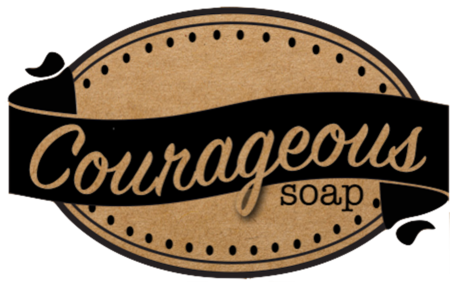
One of my many take-a-ways from the whole 101 New Experiences in 1001 Days thing was to drop the idea of instant perfection and accept, no, embrace the evolution of an idea. There are already enough critics in my head – finding the kernel of good in each experience keeps me excited, curious and psyched about my creative process, rather than curled up in a little ball thinking exceedingly Dark Thoughts.
Recently, a young friend contacted me about leading a soap-making class for a non-profit that she works with, one that helps teens develop healthy relationship expectations and positive body image through art projects.
I usually teach the gospel of Cold Process (CP) Soap, an undertaking involving lye, eye protection, and patience (ie: a requisite 4- to 6-week cure time). Due to these factors, my CP class is more demonstration than participatory which – for most teens – would be a bore.
But what about Melt-and-Pour soap?
For the uninitiated, Melt-and-Pour (MP) Soap is exactly what it sounds like: translucent glycerin soap, often cubed, that can be easily melted down, embellished with colors and other details, then poured into a mold and cut into soap. The pros? No additional lye needed, no cure time – hardened and ready an hour after pouring! Flexibility in design! The cons: doesn’t last as long as CP soap, and frankly, being a CP snob, I haven’t done much with MP. Another concern: how do natural colorants work in MP?
Still, the pros definitely outweighed the cons for this purpose. I’d just have to get over CP snobbery and also sort out that colorant thingy.
FYI: I only use natural, plant- and (to a lesser extent) mineral-based colors in my CP soaps – I try to avoid synthetic pigments where possible. But I didn’t know how straight glycerin soap would do with natural colors, so time to experiment. On this go round, I decided to color using leftover CP scraps rather than straight plant powders.

If you’ve made soap for any amount of time, you probably have bits like these for embeds or left over from trimming bars. The natural colorants that I use included indigo, activated charcoal, tumeric, black walnut, madder root and and alkanet root powders, among others. I also had some violet mica powder that I use (sparingly) for embellishment on certain bars.
My idea was to experiment with different techniques including layering on angles, coloring with chopped-up CP embeds, using a small amount of straight mica powder mixed in with the glycerin, a straight glycerin layer, embedded CP soap curls and other shapes – basically “everything but the kitchen sink” (cue endearingly hackneyed name).

For this small batch, I used an empty, clean pint carton for a mold (makes about four 3.5 oz.bars). My research suggested it best to use a flexible, heatproof container for M&P soap – pouring M&P straight into rigid containers (like glass) won’t work – plus beverage cartons have that nice waxy interior to help prevent the soap from sticking.
I chopped up various colored scraps of cured, CP soap, melted small amounts of the MP cubes, and just messed around – the part I really enjoy. The following is a peek into my “Artistic Process”:
With the carton on an angle, I poured in one naturally-hued mixture. After setting a few minutes until a thin film formed, I added in an MP layer with other colored scraps. Sometimes I sprayed a light coating of rubbing alcohol on the hardening surface of the soap to help the layers stick together (though with a batch this small, I’m not convinced it made a difference). I tried floating some small squares of Indigo embeds, I inserted a few long dark spiral curls, added some mica powder between layers, then put in a flat layer of plain MP. You get the idea.
More variations followed until I was left with this, which reminded me of a bouquet of rose buds:

But what would mica combined with glycerin (not just sprinkled between layers) look like? Obviously I had to add ONE last layer of the MP, blended with some violet mica powder, to find out. Striking color, but we may have lost the rose bud look:

Here’s what the MP soap looked like after it was cut:

Whoa – subtle, it ain’t! Actually kinda crazy pants, huh? Probably didn’t help that I used the waffle cutter on one side, given the design borders on chaotic – but hey, all in the spirit of research, right?
No matter – I love it because of all those cool kernels of insight I gleaned from the process. Where someone else might see a hodgepodge of elements, I see distinct layers of experimentation (some of which I’ve labeled for the gentle reader’s edification). I’m left psyched to try new ideas for my next experimental batch – probably good to play around with this more before leading a workshop on MP.

And that, my friends, is what makes soap making such a ridiculously gleeful process for me.
How about you? Have you ever found yourself excited with a project that, to the uninitiated, came out less than “perfect”?
DO share in the comments below and if you’d rather “show” than “tell,” photos welcome!

Leave a comment